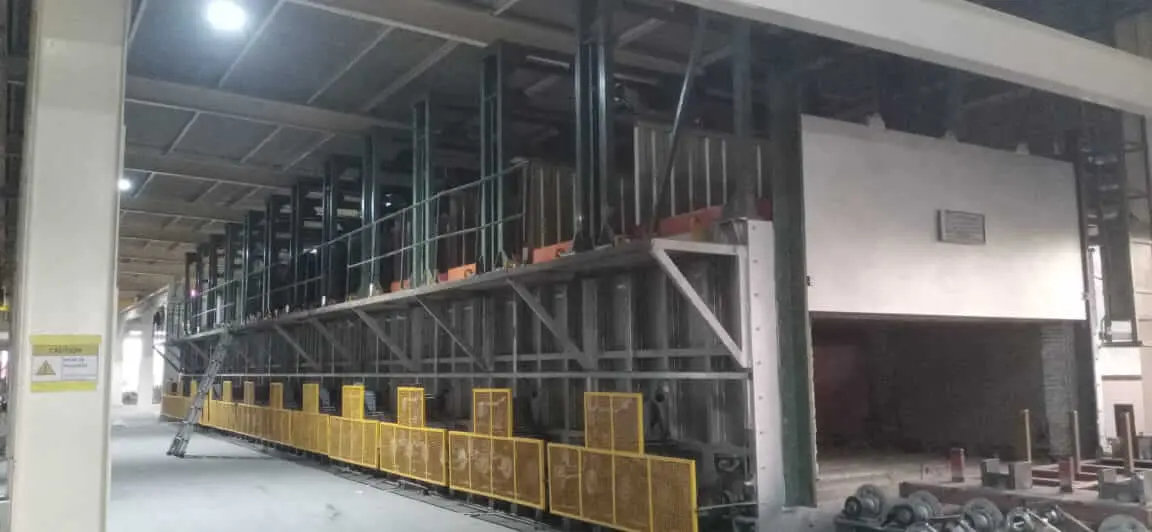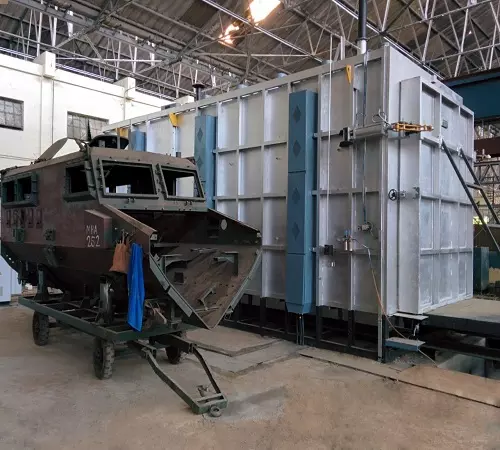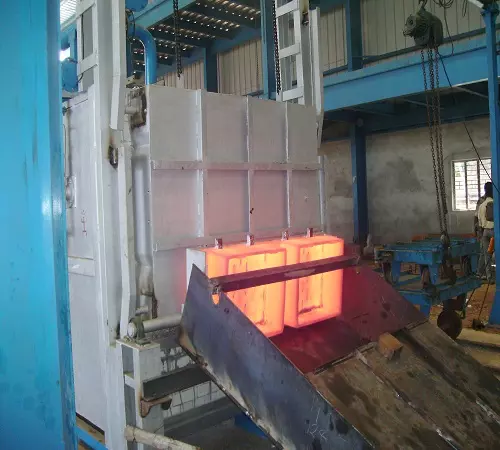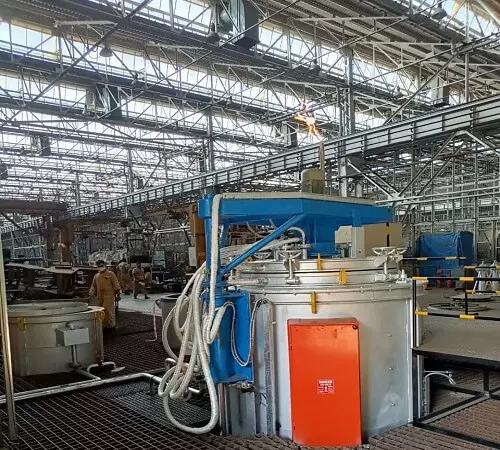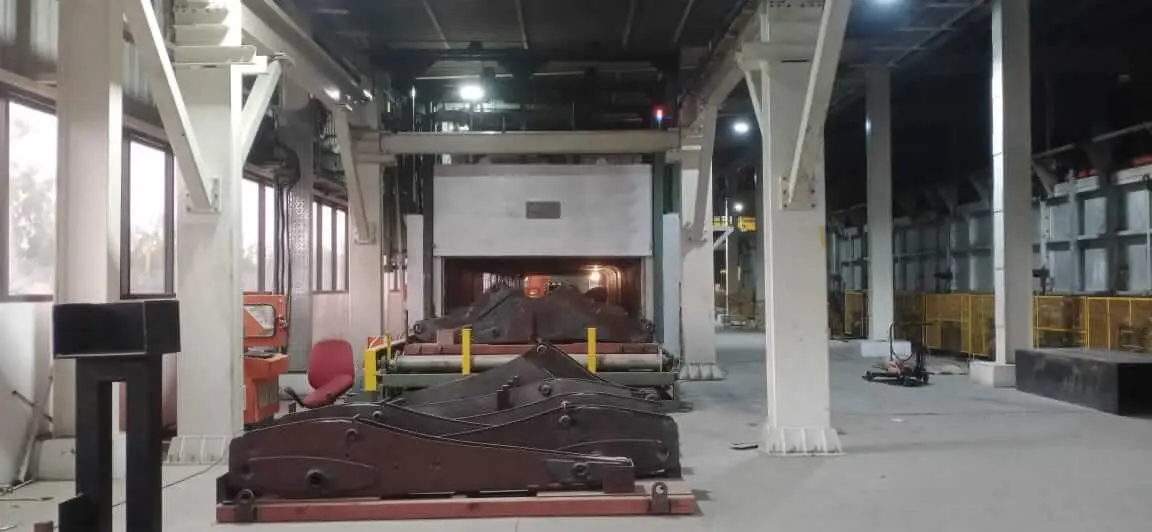Definition of Heat Treatment
Heat treatment is a controlled process used to alter the physical and sometimes chemical properties of a material, typically metals or alloys. This alteration is achieved through heating, cooling, and often holding the material at a specific temperature. The primary objectives of heat treatment include improving hardness, strength, toughness, and other mechanical properties while minimizing distortion.
Importance of Furnaces in Heat Treatment Processes
Furnaces play a pivotal role in executing heat treatment processes. These specialized heating devices create the controlled environments necessary for achieving precise temperature conditions during heat treatment. The choice of furnace directly impacts the effectiveness of the treatment, influencing the material’s final properties.
Brief Overview of Key Considerations
Temperature Control: The ability to precisely control and maintain temperatures is crucial for achieving desired material properties. Different heat treatment processes require specific temperature ranges, and furnaces must provide this accuracy.
Uniform Heating: Furnaces need to ensure even distribution of heat across the material. This uniformity prevents inconsistencies and ensures that the entire material undergoes the desired transformation.
Cooling Mechanisms: Some heat treatment processes involve rapid cooling. Furnaces may incorporate features or mechanisms for controlled cooling rates, a critical consideration for achieving the intended material characteristics.
Material Compatibility: The type of material being treated influences the choice of furnace. Different materials react differently to heat, and the furnace must be compatible with the specific material’s characteristics.
Safety Measures: Furnaces must adhere to safety standards to protect both the material being treated and the personnel involved in the process. This includes features such as emergency shut-off systems and protective enclosures.
Energy Efficiency: In the context of modern industrial practices, energy efficiency is a key consideration. Efficient furnaces not only reduce operational costs but also contribute to sustainability efforts.
Regulatory Compliance: Industries must adhere to various standards and regulations governing heat treatment processes. This includes standards like AMS 2750, NADCAP, and CQI-9, which ensure quality and consistency.
Size and Capacity: The furnace must be appropriately sized to accommodate the volume and size of the materials being treated. This ensures efficiency and prevents unnecessary energy consumption.
Types of Furnaces for Heat Treatment
A. Bogie Hearth Furnaces
Explanation and Applications:
Explanation: Bogie Hearth Furnaces are characterized by a movable bogie or cart that facilitates easy loading and unloading of materials. The bogie allows for versatility in handling different types of workpieces.
Applications: Ideal for various heat treatment applications, including annealing, tempering, and stress relieving. Commonly used for large or heavy workpieces.
Advantages and Limitations:
Advantages: Versatile, suitable for a wide range of applications. The movable bogie enables efficient material handling.
Limitations: May have size limitations compared to other furnace types. The movable components introduce maintenance considerations.
B. Chamber Furnaces
Features and Common Uses:
Features: Chamber Furnaces have an enclosed chamber or enclosure where the heat treatment process takes place. This design offers excellent temperature control and uniformity throughout the chamber.
Common Uses: Widely used for processes requiring precise temperature management, such as hardening and annealing. Suitable for batch processing.
Pros and Cons:
Pros: Excellent temperature control, uniform heating, and suitability for a variety of heat treatment processes.
Cons: Limited to batch processing, and the enclosed design may pose challenges for certain workpiece geometries.
C. Pit Furnaces
Design and Applications:
Design: Pit Furnaces are designed with a pit or well where the material is placed for heat treatment. This design is particularly useful for large and heavy workpieces.
Applications: Commonly used for processes like carburizing, hardening, and tempering of large components in industries such as automotive and aerospace.
Noteworthy Characteristics:
Characteristics: Suited for large workpieces due to the pit design. Enables efficient heating and cooling of substantial components.
D. Continuous Furnaces
Overview and Industrial Applicability:
Overview: Continuous Furnaces provide a continuous heat treatment process, allowing for a seamless flow of material through the heating and cooling stages.
Industrial Applicability: Well-suited for large-scale production, especially in industries with high-volume manufacturing requirements.
Efficiency and Productivity Benefits:
Efficiency: Continuous operation minimizes downtime between batches, enhancing overall efficiency.
Productivity Benefits: Ideal for integration into automated production lines, contributing to increased productivity.
Key Factors to Consider
A. Temperature Range
Understanding the Required Temperature Parameters:
Manufacturers must precisely determine the temperature range essential for their specific heat treatment processes.
Different materials and treatments necessitate distinct temperature conditions.
Matching Furnace Types to Temperature Needs:
Certain furnaces excel in maintaining specific temperature ranges, such as high-temperature capabilities for processes like hardening.
Matching the furnace type to the required temperature range ensures optimal results.
B. Material Compatibility
Importance of Choosing the Right Material for the Furnace:
The material used in furnace construction impacts its durability, heat retention, and overall performance.
Consideration of materials resistant to corrosion, oxidation, and thermal stress is crucial.
Impact on Heat Treatment Quality:
The choice of Heat Treatment Furnace material directly influences the quality and consistency of heat treatment outcomes.
Incompatible materials may lead to contamination, affecting the integrity of treated materials.
C. Size and Capacity
Assessing the Volume and Size Requirements:
Understanding the size and volume of workpieces or batches to be processed is essential.
Batch furnaces may suit smaller-scale operations, while continuous furnaces are apt for larger volumes.
Matching Furnace Capacity to Production Needs:
Aligning furnace capacity with production requirements prevents bottlenecks and ensures timely processing.
Overestimating or underestimating capacity can impact efficiency and overall productivity.
D. Energy Efficiency
Evaluating Energy Consumption and Efficiency:
Manufacturers should assess the energy efficiency of furnaces to minimize operational costs.
Energy-efficient furnaces contribute to sustainable practices and cost-effectiveness.
Eco-friendly Options for Sustainable Operations:
Exploring furnaces with eco-friendly features, such as reduced emissions and energy-saving mechanisms.
Sustainable operations align with environmental responsibility and may have long-term cost benefits.
Compliance and Standards
A. Industry Standards (AMS 2750, NADCAP, CQI-9, Pyrometry)
Overview of Relevant Standards:
AMS 2750: Details pyrometric requirements for thermal processing equipment.
NADCAP (National Aerospace and Defense Contractors Accreditation Program): Ensures compliance with industry-specific standards.
CQI-9 (Automotive Process Performance): Establishes guidelines for heat treat system assessment.
Pyrometry: Focuses on temperature measurement accuracy in industrial processes.
Importance of Adhering to Industry Norms:
Compliance with these standards is critical for industries like aerospace, automotive, and others.
Adherence ensures quality control, safety, and compatibility with broader industry practices.
Maintenance and Longevity
A. Best Practices for Furnace Maintenance
Routine Inspection and Cleaning:
Regular visual inspections and cleaning prevent the accumulation of contaminants.
Monitoring combustion systems, sensors, and insulation enhances efficiency.
Calibration and Temperature Uniformity:
Calibrating instruments ensures accurate temperature readings.
Maintaining uniform temperature distribution across the furnace chamber is vital for consistent results.
B. Extending the Lifespan of Heat Treatment Furnaces
Proactive Repairs and Upgrades:
Identifying and addressing issues promptly prevents major breakdowns.
Upgrading components or adopting new technologies can enhance performance.
Training and Skill Development:
Training maintenance personnel on the latest technologies and best practices.
Skilled technicians can troubleshoot effectively, increasing the furnace’s overall lifespan.

